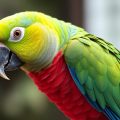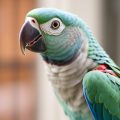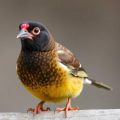Содержание
- Why respiratory infections matter in parrots
- How parrot respiratory systems differ from mammals
- Common causes of respiratory infections
- Recognizing the signs: symptoms to watch for
- How an avian veterinarian diagnoses respiratory infections
- Treatments: what works and why
- Home care while your bird is being treated
- Prevention: keeping your parrot’s respiratory system strong
- Common respiratory illnesses in parrots and what they mean
- Species-specific notes: how different parrots react
- Zoonotic risks and household safety
- Cost and prognosis: what to expect
- When to seek emergency veterinary care
- Real-life scenarios and practical tips
- Common mistakes owners make and how to avoid them
- Long-term management and living with a bird who has had respiratory disease
- Resources and support
- Key takeaways and what to do right now
- Conclusion
SQLITE NOT INSTALLED
Parrots are vivid, intelligent companions that fill our homes with color, laughter, and surprising personalities. When they stop singing, sneeze frequently, or sit quietly with fluffed feathers, it tugs at our hearts. Respiratory infections are one of the most common—and most worrying—health problems that affect parrots. This article walks you step by step through what respiratory infections look like, why they occur, how they are diagnosed and treated, and what you can do as a caregiver to prevent them or manage them at home. Whether you have a tiny budgie or a majestic macaw, understanding the signs and the options can save your bird’s life.
Before we dive deep, a quick note: you didn’t list specific keyword phrases to include, so I’ve used natural, common terms repeatedly and evenly throughout this article—phrases like respiratory infections, nasal discharge, sneezing, nebulization, psittacosis, and avian veterinarian—so the text reads naturally and remains helpful.
Why respiratory infections matter in parrots
Respiratory infections in parrots matter for a few reasons. First, birds have very efficient but delicate respiratory systems; their air sacs and lungs are different from mammals’ and can be quickly overwhelmed. Second, because birds often hide illness until they are quite sick, respiratory signs can sometimes be subtle at the start, making early detection challenging. Third, some infections are zoonotic—meaning they can spread to humans—so they can be a household health issue, not just a bird problem.
When a parrot’s breathing is impaired the consequences can be severe: reduced oxygen to tissues, loss of appetite, decreased mobility, and secondary infections. And because parrots are prey animals by instinct, they tend to mask illness, so by the time you notice the signs they might already need veterinary attention. That’s why reading this guide is a great first step in being a confident, informed guardian.
How parrot respiratory systems differ from mammals
Parrot lungs are rigid and paired with multiple air sacs that act like bellows to move air through the lungs. Instead of expanding the lungs to inhale, birds move air in a unidirectional flow through parabronchi, allowing highly efficient gas exchange. That efficiency supports flight but also means airborne pathogens and tiny particles can travel rapidly through the respiratory tract. The sinuses, beak, and nares (nostrils) are all connected, and infections can spread between these areas quickly.
Anatomical differences make certain diagnostics and treatments in birds unique. For example, you might hear about radiographs, endoscopy, or air sac cannulation in avian medicine—procedures rarely used in the same way for dogs or cats. Understanding these differences helps you appreciate why avian-specific veterinary care is essential.
Common causes of respiratory infections
Respiratory infections in parrots can be caused by a variety of organisms and environmental factors. Often, a combination of causes—like a weakened immune system plus poor air quality—will lead to illness.
Infectious causes
- Bacterial infections: Common culprits include Chlamydia psittaci (psittacosis), Mycoplasma, and various gram-negative bacteria. They can produce nasal discharge, respiratory distress, and systemic illness.
- Viral infections: Viruses such as avian influenza, paramyxovirus, and some adenoviruses can affect the respiratory tract.
- Fungal infections: Aspergillosis (caused by Aspergillus species) is notorious in birds, often arising from inhaled spores in dusty or moldy environments.
- Parasitic infections: Rare but possible, certain parasites can invade respiratory tissues or sinuses.
Non-infectious causes
- Allergic reactions: Dust, pollen, feathers, or household chemicals can trigger inflammation.
- Environmental irritants: Smoke, aerosols, strong perfumes, Teflon fumes, and cleaners can damage the respiratory lining.
- Foreign bodies: Plant material, seed hulls, or bedding particles can become lodged in the nares or airways.
- Chronic conditions: Repeated infections or chronic sinusitis can cause ongoing symptoms and scarring.
Recognizing the signs: symptoms to watch for
Parrots will often show a combination of subtle and obvious signs. Because birds hide illness, even small changes warrant attention.
- Sneezing and nasal discharge: Clear, cloudy, or thick discharge may be present. Yellow or green suggests bacterial infection.
- Open-mouth breathing: A serious sign indicating difficulty breathing and potential respiratory distress.
- Tail bobbing: Noticeable up-and-down movement of the tail with each breath; a red flag for respiratory effort.
- Rattling, clicking, or wheezing sounds: Noisy breathing that wasn’t there before.
- Changes in vocalization: Softened or less frequent calls can suggest discomfort.
- Reduced appetite, weight loss, lethargy: General signs that a bird is unwell.
- Eye discharge or conjunctivitis: Often accompanies nasal issues when sinuses are involved.
- Head shaking, rubbing at the beak or face: Attempts to clear irritants.
If you see open-mouth breathing, severe lethargy, or collapsing, seek emergency veterinary care immediately.
How an avian veterinarian diagnoses respiratory infections
A proper diagnosis is the cornerstone of effective treatment. Here’s what to expect at the clinic.
History and physical exam
An avian vet will start by taking a thorough history: when you first noticed symptoms, diet, recent changes, exposure to other birds, and household hazards. The physical exam includes listening to the respiratory system, checking the nares, eyes, mouth, and palpating the crop and abdomen.
Diagnostic tests
- Cytology and cultures: Swabs from the choana (roof of the mouth), trachea, or nares can be cultured to identify bacteria or fungi.
- PCR testing: Polymerase chain reaction tests can detect specific pathogens such as psittacosis or viral agents.
- Bloodwork: CBC and biochemistry can show signs of systemic infection or organ involvement.
- Radiographs (X-rays): Help detect air sac involvement, pneumonia, or masses.
- Endoscopy (rhinoscopy/tracheoscopy): Visualizes the nasal passages and airways directly and allows targeted sampling.
- Fecal testing: Sometimes used to check for concurrent infections.
Because many avian pathogens are difficult to culture or take time to grow, vets often start broad treatment when the bird is clearly ill, then refine therapy when test results arrive.
Treatments: what works and why
Treatment depends on cause, severity, and the bird’s overall health. The avian veterinarian will tailor therapy based on diagnostics and clinical judgment.
Bacterial infections usually require targeted antibiotics, often given orally or via injection. Common choices include doxycycline, enrofloxacin, or amoxicillin depending on culture results. For psittacosis (Chlamydia psittaci), doxycycline is the treatment of choice and treatment courses can be several weeks.
Antivirals are less commonly used in birds compared to mammals, and options depend on the virus involved. Some viral illnesses are managed supportively rather than cured outright.
Antifungal therapy
Aspergillosis and other fungal infections often need prolonged antifungal therapy such as itraconazole or voriconazole. Treatment duration can be long—weeks to months—and often requires follow-up imaging to confirm improvement.
Supportive care
Supportive measures are critical:
- Nebulization and coupage: Nebulizing saline (sometimes with antifungal or antibacterial agents when advised by a vet) helps loosen secretions. Gentle chest percussion (coupage) can help expel mucus.
- Oxygen therapy: Used for birds in respiratory distress.
- Fluid therapy and warming: Sick birds can dehydrate and chill; warm subcutaneous fluids may be necessary.
- Nutritional support: Hand-feeding or appetite stimulants to keep calories up.
- Isolation: Prevent spread to other birds and reduce stress.
Surgery and advanced interventions
In cases of abscesses, foreign bodies, or severe anatomical issues, surgical intervention may be needed. Endoscopic removal of fungal plaques or masses is sometimes performed. In rare cases, continuous oxygen or intensive care may be required.
Home care while your bird is being treated
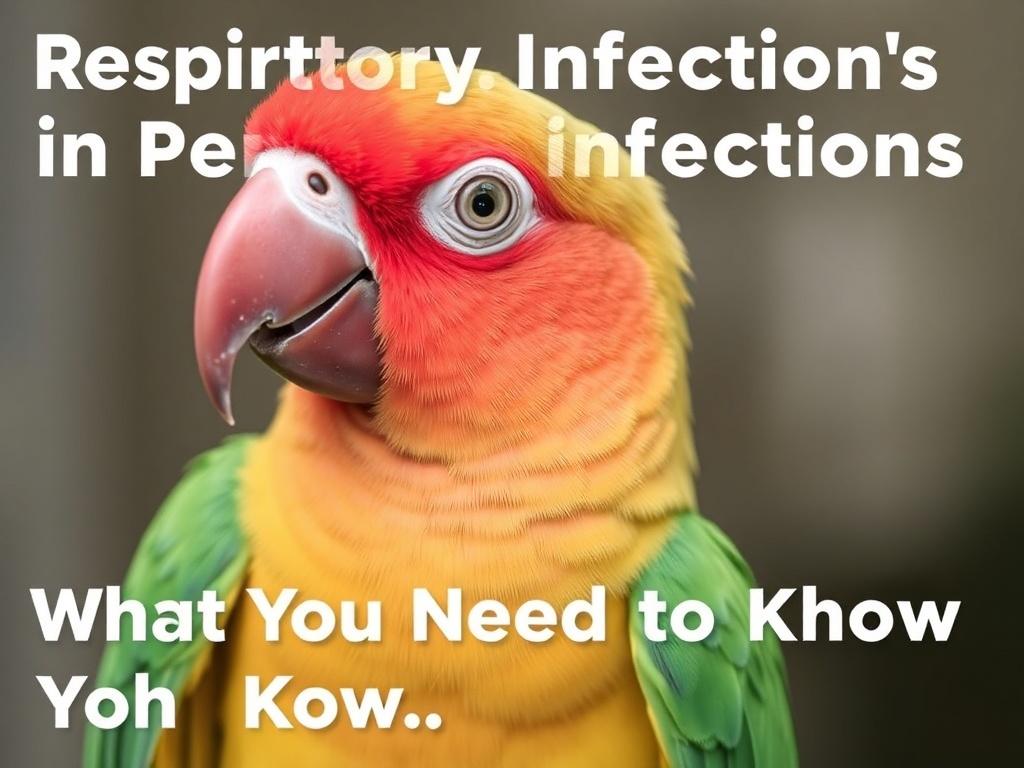
Once your avian veterinarian starts a treatment plan, your role as caregiver is vital. Simple measures at home can speed recovery and prevent relapse.
Environment and air quality
- Increase humidity: Use a cool-mist humidifier (clean daily) or run a warm shower in the bathroom with your bird in a carrier for short nebulization-like sessions—only if the bird tolerates it and your vet approves.
- Eliminate irritants: Stop smoking, avoid aerosols, air fresheners, scented candles, and don’t use non-stick cookware at high heat.
- Keep the cage clean: Clean perches, food dishes, and cage trays daily; replace dusty bedding with easily cleanable surfaces.
- Provide quiet and warmth: Sick birds rest best in a calm environment and a stable, slightly warmer temperature (but not overheated).
Medication administration tips
Giving meds to parrots can be challenging. Use a syringe for liquid medications, and follow the vet’s instructions about dosing and timing precisely. For pills, some owners hide tablets in favorite foods but consult your vet to ensure the full dose is consumed. If you struggle, ask the clinic for a demonstration; many will show you the safest way to administer medication.
Feeding and hydration
Offer favorite, easy-to-eat foods—soft fruits, pellets soaked to soften, or a vet-recommended hand-feeding formula if your bird won’t eat. Encourage drinking and consider offering electrolyte solution if dehydration is a concern.
Prevention: keeping your parrot’s respiratory system strong
Preventing respiratory infections starts with good husbandry and vigilance.
Quarantine and introduction practices
Always quarantine new birds for at least 30 days and have them checked by an avian veterinarian before introducing them to resident birds. That helps catch asymptomatic carriers, especially of diseases like psittacosis.
Maintain excellent air quality
Use high-quality filtration for heavily used rooms if possible. Avoid dusty seed mixes as a primary diet; seed dust contributes to respiratory irritation. Consider pellet diets or offer clean, fresh foods and steam-safe vegetables.
Regular veterinary care
Annual or biannual exams help catch problems early. Regular fecal checks and wellness screenings can detect issues before they become severe. Discuss any subtle changes in behavior with your vet.
Vaccination and preventive strategies
Some regions and circumstances may warrant vaccination or prophylactic treatments for certain diseases. Your avian veterinarian can recommend options based on local disease prevalence.
Common respiratory illnesses in parrots and what they mean
Here’s a quick reference to some named conditions you might hear about.
| Condition | Cause | Key Signs | Treatment |
|---|---|---|---|
| Psittacosis (Chlamydia psittaci) | Bacterial (chlamydia) | Nasal/ocular discharge, lethargy, diarrhea, sometimes respiratory distress | Doxycycline for several weeks; zoonotic precautions |
| Aspergillosis | Fungal (Aspergillus spp.) | Open-mouth breathing, wheezing, tail bobbing, intermittent lethargy | Long-term antifungals, environmental control, possible surgical debridement |
| Mycoplasma infection | Bacterial (Mycoplasma) | Chronic respiratory signs, sneezing, sinusitis | Targeted antibiotics, supportive care |
| Air sacculitis | Bacterial or fungal | Labored breathing, decreased vocalization, lethargy | Antibiotics/antifungals, sometimes air sac flushing |
Species-specific notes: how different parrots react
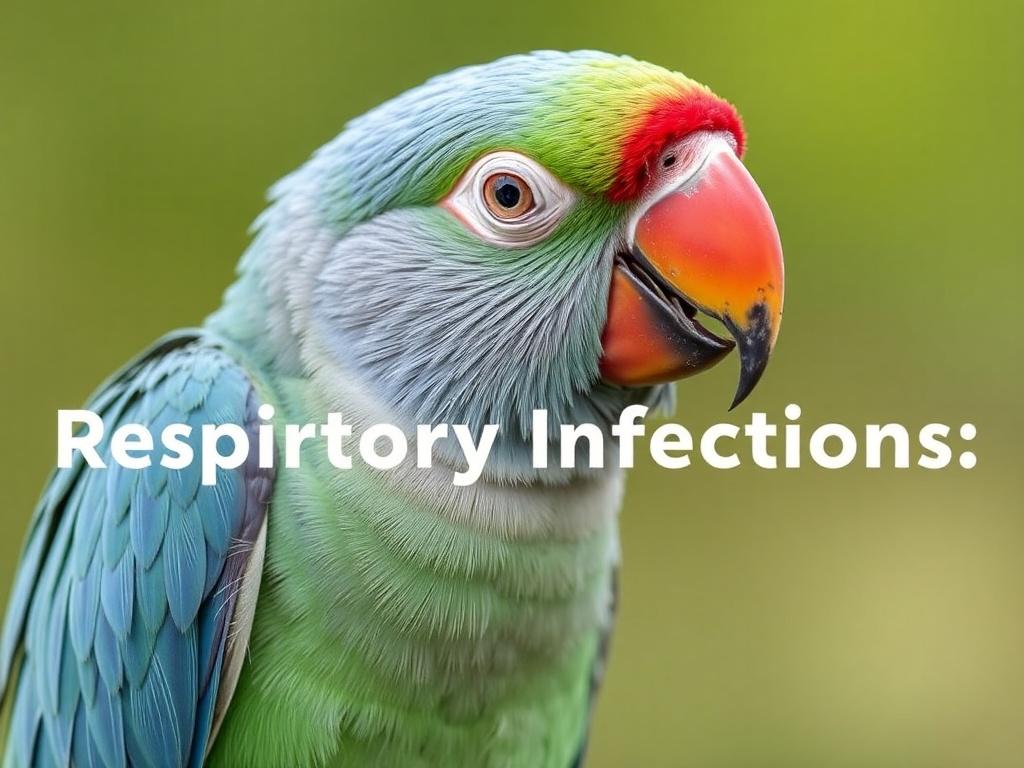
Not all parrots are the same. Size, species, and genetics affect disease susceptibility and presentation.
Budgies and cockatiels
Smaller birds like budgerigars and cockatiels often show rapid decline. Their small size means little reserve, and they can go from appearing mildly ill to critically ill in a short time. Watch them closely and seek care early.
African greys
African greys are prone to subtle behavioral changes when unwell; they may become quiet or show changes in vocalization before breathing signs appear. They can also be sensitive to medication dosages.
Macaws and amazons
Larger parrots tolerate illness a bit longer but can have severe fungal or bacterial infections that are more difficult to treat due to size and the deep location of air sacs. Cost of treatment can be higher because of dosing.
Zoonotic risks and household safety
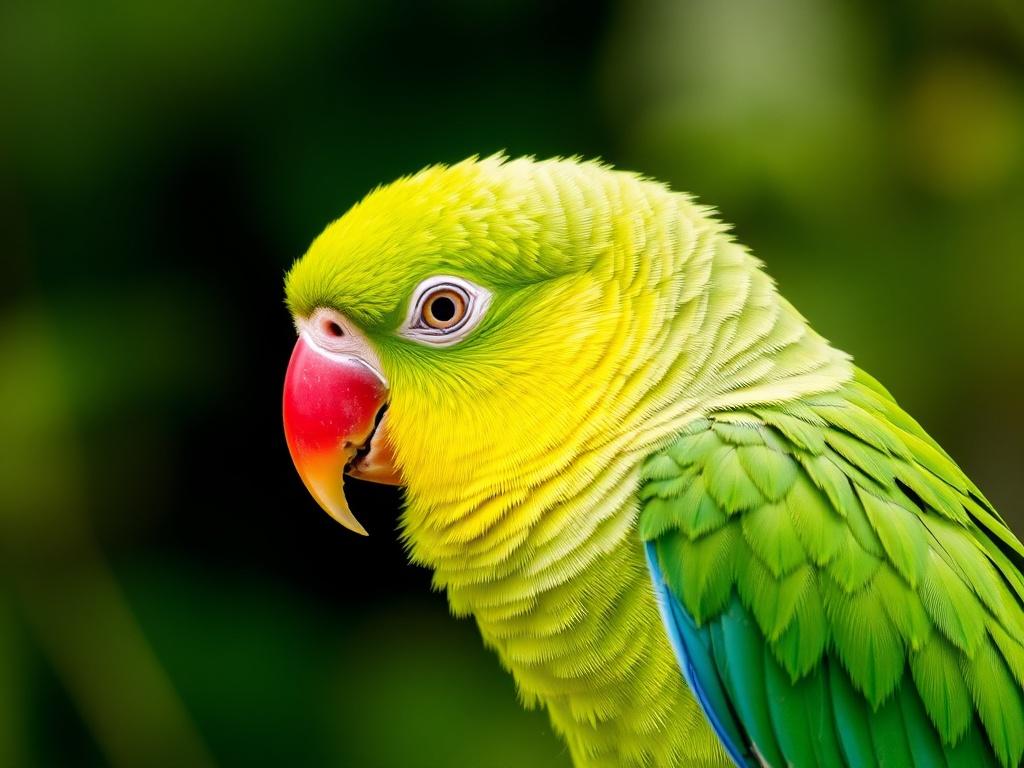
Some avian respiratory infections are zoonotic—most notably psittacosis, caused by Chlamydia psittaci. Humans can develop fever, cough, and other flu-like symptoms from infected birds. If you suspect psittacosis or another zoonotic disease:
- Limit exposure: Keep the sick bird isolated in a well-ventilated area away from people, especially children, pregnant women, and immunocompromised individuals.
- Wear protection: Gloves and a mask (N95) when handling the bird or cleaning its cage.
- Seek testing and treatment: Notify your physician if you develop symptoms and tell them about the bird exposure.
Your avian veterinarian can advise about necessary precautions and legal reporting requirements in your region.
Cost and prognosis: what to expect
Costs vary widely based on diagnostics, treatment duration, and the need for hospitalization or advanced procedures. Expect higher costs when imaging, endoscopy, and prolonged medications are required. Fungal infections tend to be more expensive and take longer to resolve than straightforward bacterial sinusitis.
Prognosis depends on early recognition, the cause, and the bird’s overall health. Bacterial infections caught early often respond well to antibiotics. Aspergillosis can be chronic and difficult to cure but can be managed successfully in many cases with long-term therapy and environmental improvement.
When to seek emergency veterinary care
Get immediate care if you observe:
- Open-mouth breathing at rest
- Blue or very pale mucous membranes
- Collapse, seizures, or severe vomiting
- Sudden inability to stand or move
These signs suggest severe respiratory compromise or systemic disease and require urgent stabilization, oxygen therapy, and diagnostics.
Real-life scenarios and practical tips
Here are three short, practical scenarios to help you recognize and act:
Scenario 1: The sneezing cockatiel
You notice a cockatiel sneezing and with a tiny clear nasal discharge. It’s still active and eating. Action: Wipe the nares gently with a warm, damp cloth, monitor for 24–48 hours, improve cage hygiene and humidity, and call your avian vet if symptoms persist or worsen. Early vet assessment helps determine if antibiotics are needed.
Scenario 2: The quiet African grey
An African grey becomes unusually quiet and breathes a little faster than usual. No discharge, but it’s less interactive. Action: Schedule a vet visit promptly—subtle behavioral changes can indicate early disease. Keep the bird warm and reduce stress; gather any recent history of exposure or environmental changes to share with the vet.
Scenario 3: The severe macaw with labored breathing
A macaw shows open-mouth breathing, tail bobbing, and reluctance to move. Action: This is an emergency. Transport the bird to an avian clinic as quickly as possible; oxygen and IV fluids may be required. The sooner the bird receives care, the better the chance of recovery.
Common mistakes owners make and how to avoid them
Avoid these pitfalls:
- Delaying vet care: Waiting for “it to pass” is risky—birds can deteriorate quickly.
- Using home antibiotics: Human antibiotics or leftover drugs can be ineffective or harmful. Always use vet-prescribed medications.
- Ignoring air quality: Small changes in household products can aggravate a bird’s respiratory tract.
- Over-cleaning with aerosols: Sprays and foggers create particles that can worsen symptoms.
A proactive mindset—observing behavior, keeping a clean environment, and seeking veterinary care early—goes a long way.
Long-term management and living with a bird who has had respiratory disease
Some birds recover fully; others may experience recurrent problems. Long-term management may include periodic veterinary checkups, ongoing nebulization sessions, environmental controls, and sometimes low-dose maintenance medications in chronic cases. Keep a diary of symptoms and triggers—seasonal changes, cleaning products, or new household items can be clues to preventing flare-ups.
Checklist for long-term respiratory care
- Regular wellness exams with an avian veterinarian
- High-quality diet (pellets + fresh foods)
- Routine cleaning with bird-safe products
- Humidifier use during dry seasons
- Quarantine protocol for new birds
- Avoidance of smoke, aerosols, and Teflon fumes
- Prompt attention to any recurrent symptoms
Resources and support
Knowledgeable resources can be life-changing when you’re dealing with a sick bird. Your avian veterinarian is your primary resource. In addition, consider:
- Local avian veterinary specialists or emergency clinics
- Avian rescue organizations and experienced breeders (as long as they recommend veterinary care)
- Reputable online forums and educational websites run by avian vets or university programs
- Books and continuing education resources for bird owners
Keep a folder (digital or paper) with medical records, medication instructions, and contact numbers for emergencies.
Key takeaways and what to do right now
If you have a parrot right now, here are immediate steps to protect respiratory health:
- Scan your environment: Remove smoke, strong fragrances, and dusty seed mixes; consider changing to pellets if your bird eats primarily seed.
- Watch for subtle signs: Sneezing, tail bobbing, or quieter vocal behavior deserve attention.
- Get to an avian vet: If symptoms persist more than 24–48 hours or if breathing looks labored, don’t wait—seek professional care.
- Follow treatment plans closely: Give full courses of medication, use nebulization and humidity as instructed, and complete follow-up visits.
Thoughtful, early action makes a huge difference in outcomes for birds with respiratory infections.
Conclusion
Respiratory infections in parrots are common, potentially serious, and often treatable—especially when caught early and managed by an avian veterinarian. Understanding the signs, maintaining excellent air quality and nutrition, quarantining new birds, and seeking prompt veterinary care are the best defenses. With careful attention and the right partnership with a vet, most caretakers can help their feathered friends breathe easier and return to their bright, chatty selves.


